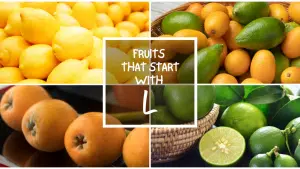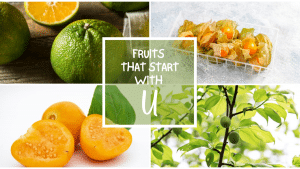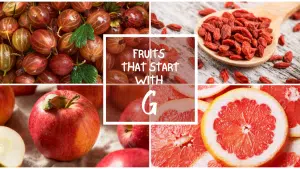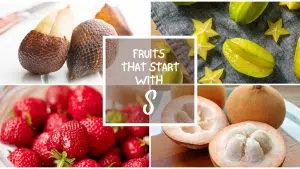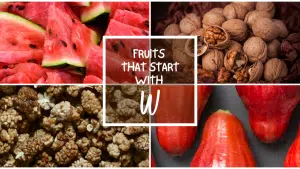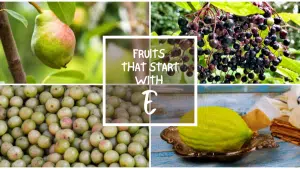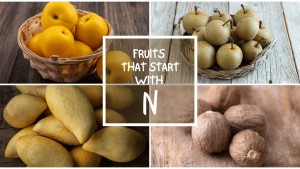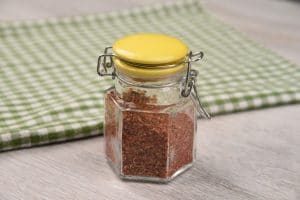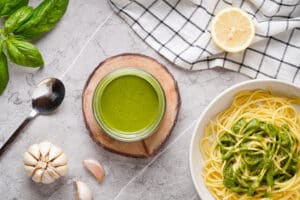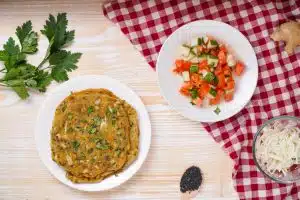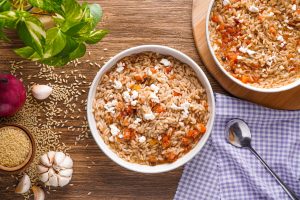All The Fruits That Start With P
Important Note: When you buy through our links, we may earn a commission. As an Amazon Associate we earn from qualifying purchases. Content, pricing, offers and availability are subject to change at any time - more info.
Each fruit contains a certain unique quality that makes them stand out from the rest, whether its originality, name, shape, taste, or even the nutritional value they possess. Fruits that begin with P are very popular such as pineapple, peaches, pears, and passion fruits. Here is a detailed list of all the fruits that start with P.
- Peaches
- Pineapple
- Pears
- Papaya
- Passion Fruit
- Pomegranate
- Phalsa
- Plum
- Pecan
- Persian Lime
- Pomelo
- Pumpkin
- Final letter
Peaches

Peaches are scientifically referred to as Prunus persica, and they are mostly cultivated in the warmer temperate regions of both the northern and southern hemispheres. It is believed that peaches originated from China, where they then spread across Asia, where the Spanish explorer spread them all over the world. Over the years, scientists have studied the peach fruit and have developed new varieties of the fruit, which have created much superior fruit varieties. Normally peach trees can reach a height of 6.5 meters, but when cultivated, the height is restricted to between 3 and 4 meters by pruning.
The peach fruit consists of the hard interior, the core where the seed is enclosed, and the juicy, fleshy exterior, which forms the edible part when the fruit ripens. Due to the different varieties of peaches available, they are categorized into clingstones and freestones. This is usually decided by the fruit’s ability to cling to the fruit’s stone. Both of these varieties can have either white or yellow flesh. The white-fleshed fruits are much sweeter and less acidic than the yellow-fleshed fruits, which are more acidic. Both varieties of peach fruit tend to have a little bit of red.
All peaches possess an aromatic smell when ripe and are always sweet. Peaches can be eaten raw or cooked. Peaches have been used as an ingredient in various dishes and pastries, such as pies. Some recipes that you may try include paring peaches with berries and a hint of dark chocolate for a healthy dessert, grilling the peaches to pair with pork chops or serving in a cinnamon-spiced dessert. You can also slice the peaches into salads, oatmeal or yogurt for a sweet treat or blend fresh or frozen peaches into a creamy smoothie.
Peaches happen to possess a lot of nutritious values, such as vitamins A, K, C, and E, along with minerals like potassium, iron, manganese, and copper. These vitamins and minerals aid the body in digestion, improving your heart’s health, protecting your skin, fighting against some types of cancer, and reducing allergy symptoms and blood sugar levels. The peach fruit can be found anywhere in the world, but some varieties are limited to certain regions.
Pineapple
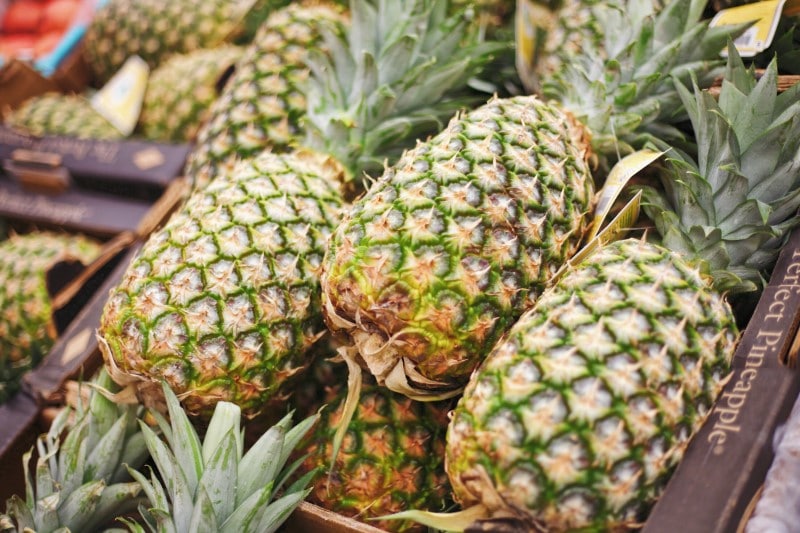
The pineapple is a tropical plant with an edible fruit that is scientifically known as Ananas comosus. The pineapple is indigenous to South America, from where it was spread to the rest of the world. The pineapple fruit grows on a small shrub where the unpollinated flowers fuse to form multiple fruits. There are almost five varieties of pineapple, each native to certain regions of the world. The pineapple has a very pleasant aroma and is usually juicy and sweet when ripe.
The pineapple can be eaten raw or cooked. Most people prefer consuming pineapples as a snack, but they can also be used in the preparation of various dishes or desserts. Pineapples can be served as a dresser or topping on foods such as pizza or as grilled rings on hamburgers. Some traditional delicacies use pineapples as an ingredient; these dishes include Hawaiian haystack, afritada, Kaeng som pla, and hamonado. Pineapples can be crushed and used in jams, yogurt, ice cream, and sweets. Pineapple juice is a very popular beverage all over the world.
The pineapple is a rich source of vitamins C and B6, minerals like copper, magnesium, manganese, potassium, and antioxidants. The minerals and vitamins present in the pineapple offer health benefits such as reducing the risk of certain kinds of cancer, helping the body in digestion, boosting the body’s immune system, easing the symptoms of arthritis, suppressing inflammation, and help in the body’s recovery whether from an injury or strenuous exercise. Pineapples can be found in any grocery store all over the US.
Pears

Pears are grown in almost all corners of the world. Hence, they are very common and one of the most popular fruits on earth. Pears are scientifically referred to as Pyrus communis. It is believed that the pear fruit originated from China and Asia before spreading to all the corners of the world. With the advancements made in science, scientists have been able to crossbreed the pear plant, thus creating new varieties of the pear fruit. The pear mostly grows in coastal regions that are mild and temperate. A grown pear tree can get to a height of about 10 -17 meters tall with a narrow crown, though a few species of the pear might appear shrubby.
There are more than 2000 varieties of the pear fruit, with each fruit varying in shape, size, color and taste. When ripe, most pears have a sweet smell. Pears can be consumed raw or canned, either dried or as juice. Pear juice is commonly used in making jams and jellies but in a combination of various fruits. Pear juice can be fermented to create cider, commonly referred to as perry. When distilled, perry can be used to produce eau de vie de Poire, which is an unsweetened colorless fruit brandy. The puree harvested from the pear fruit can be used to manufacture snacks such as fruit roll-ups and fruit by the foot.
The pear fruit is very nutritious since it provides the body with vitamins C, B6 and K and minerals such as calcium, potassium, iron, magnesium and antioxidants such as riboflavin and folate. The health benefits of the pear fruit to the body include being a source of fiber, encouraging detoxification, helping fight against free radicals and also helping in reducing the risks of any cardiovascular diseases. The pear tree is also a source of very good timber.
Papaya

The papaya is also known as pawpaw, and scientifically it goes by the name Carica papaya. The originality of the papaya can be traced back to Central America and southern Mexico regions. It was through the Spanish explorers that the papaya is now cultivated almost in every region of the world, especially in Hawaii, India, Australia and central Africa. The papaya tree mostly consists of sparsely positioned branches with a single stem ranging from 5 to 10 meters. The papaya fruit is a large berry between 15-45 centimeters long and 10-30 centimeters wide. When ripe, the skin color of the fruit changes from green to orange and the flesh begins to feel a bit soft. The inner part of the fruit is usually a hollow cavity containing numerous black seeds attached to the cavity wall. When ripe, the papaya produces a sweet-smelling aroma, and its flesh is often very sweet.
Papayas can be eaten raw only when it’s ripe and without the skin, because when it is unripe, it produces a poisonous latex content. The only way to eat unripe papaya is by cooking it. The recipes for the unripe papaya heavily depend on the region you are from. In Lao and Thai cuisine, unripe green papayas make a spicy salad known in Laos as tam mak hoong and in Thailand as som tam and curries, such as kaeng som. The young leaves of the papaya are also a delicacy in some parts of the world. While in South America, the unripe papayas are used to preserve or prepare sweet potatoes. The latex produced by unripe papayas is usually rich in papain; hence most people in the Caribbean, South America, South East Asia and Africa use it as a meat tenderizer.
Some health benefits of the papaya include asthma and cancer prevention, prevention of age-related muscular degradation, improves your bone health and reduces the risks of heart diseases, diabetes, and inflammation. All these health benefits result from the nutrients, vitamins and minerals found in the papaya fruit. As a traditional medicine, the papaya leaves have been used to treat malaria and can be smoked to relieve you in case of an asthma attack. The latex produced by the unripe papayas can cause irritation or an allergic reaction.
Passion Fruit
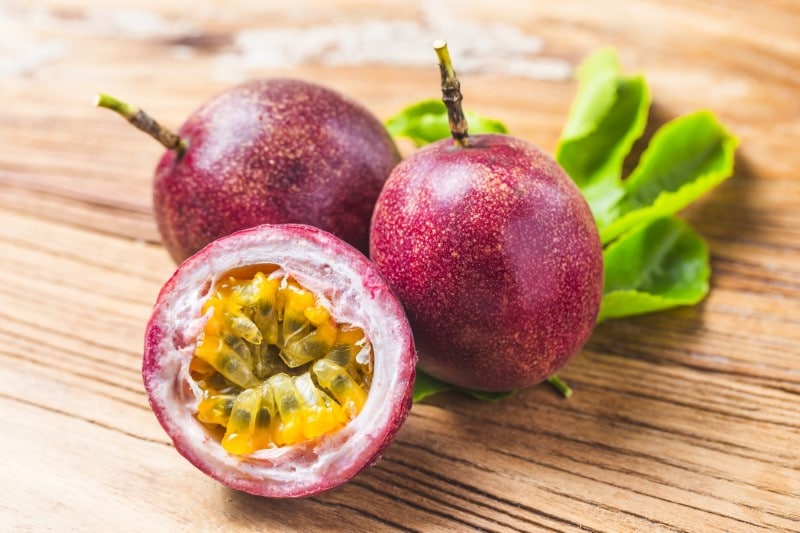
The passion fruit is scientifically referred to as Passiflora edulis. This fruit is native to South American regions of the Andes Mountains, areas of Argentina, Paraguay, and Brazil. The passion fruit is mostly cultivated for its seedy, sweet fruit. The passion plant is a perennial vine, with each vine producing a flower5-8 centimeters apart from each other. There are several varieties of the passion fruit, but the most common varieties are the yellow passion fruit and the purple passion fruits. The purple variety is usually smaller and less acidic than the yellow passion fruit, and it has got a richer flavor and aroma. This fruit has very simple leaves and unique flowers that appear greenish-white in color. The fruit size is between 6 – 8 centimeters long and 5-7 centimeters wide. The outer coating of the fruit is usually hard and very shinny and smooth though the interior is made of soft padding that protects the seeds, which are black and hard, surrounded by a transparent pulp. When mature, the passion fruit turns from green to yellow or purple depending on the variety of the fruit, usually with a very aromatic scent.
The pulp is the edible part of the fruit, and it’s usually very sweet and a bit acidic with little floral tastes. The pulp can be eaten raw or even cooked. The pulp and the seeds can be used in cocktails, fruit salads, or served atop ice cream. The seeds can be extracted, and the pulp juice can be boiled and used to make jams, sauces, ice cream, and pies. To neutralize the acidity of the pulp, you are recommended to add sugar and cream to the pulp.
The passion fruit is a source of nutrients such as potassium, magnesium, calcium, iron, phosphorus and vitamins A, B6 and C. The health benefits of the fruit include improved insulin sensitivity, offers a low glycemic index, a good source of antioxidants boosts the immune system and improves your heart health while also helping reduce your anxiety levels. Passion fruits are very common in the US since they can be found in any grocery store or market.
Pomegranate

The pomegranate is a fruit-bearing deciduous shrub that is believed to have originated from the Mediterranean region and is scientifically referred to as Punica granatum. The fruiting season in the southern hemisphere is from March to May, while in the northern hemisphere, the fruiting season is usually between October to February. The pomegranate fruit is mostly cultivated in the middle east, central and southeast parts of Asia, the Indian subcontinent, and Africa’s northern and tropical regions. The pomegranate fruit is usually red-purple. The inner part is always spongy and organized as nonsymmetric chambers containing seeds inside sarcotestas, which are embedded without attachment to the mesocarp. The seed in the fruit range from about 200 to 1400. The fruit possesses a sour flavor due to its low ph. levels of the fruit.
The pomegranate fruit is mostly known for its juice. In both Pakistani and Indian cuisines, the pomegranate seeds are used as a spice referred to as anar dana. In Azerbaijan, pomegranate juice is served with fish. In Turkey, the sauce is used as a salad dressing to marinate meat or as a beverage.
The pomegranate fruit contains vitamins C and B9 and minerals and antioxidants. The health benefits of the fruit include helping deal with inflammation, possessing anticancer properties, helping the body perform its urinary functions, and possessing antimicrobial properties. The pomegranate fruit can be easily found in the US and any region of the world.
Phalsa
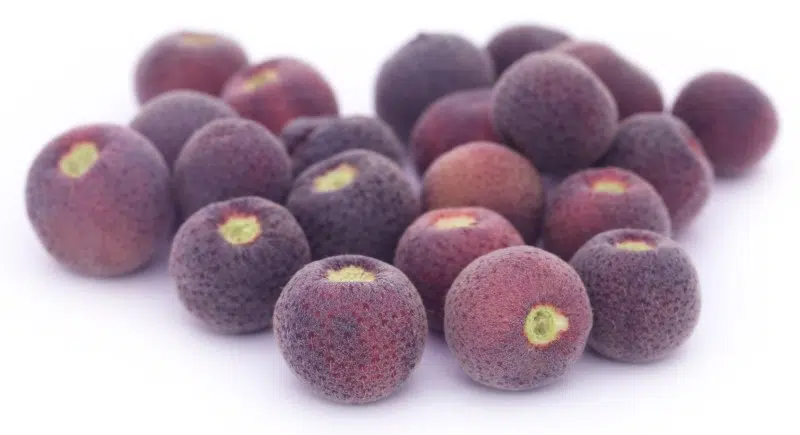
Phalsa is a flowering plant that was first discovered in the Indian subcontinent before it was spread to the rest of the world. Phalsa is scientifically referred to as Grewia asiatica. The phalsa plant can grow to a height of about 8 meters tall. The fruit is approximately 5-12 millimeters wide, and when ripe, it turns from purple to black.
The fruit can be eaten raw and is usually sweet but with a sour, acidic aftertaste. The phalsa fruit can also be used in the preparation of traditional Iranian non-alcoholic drinks such as sherbet and squash, which are prepared by mixing the fruit pulp and sugar.
The phalsa contains vitamin C and minerals like sodium and iron. The health benefits include treating anemia, regulating the electrolyte imbalance in the body, reducing anxiety, helping relieve joint pains, and acting as a treatment for respiratory issues. The fruit also contains antioxidants that help eliminate free radicals and regulates the body’s blood sugar levels.
Plum
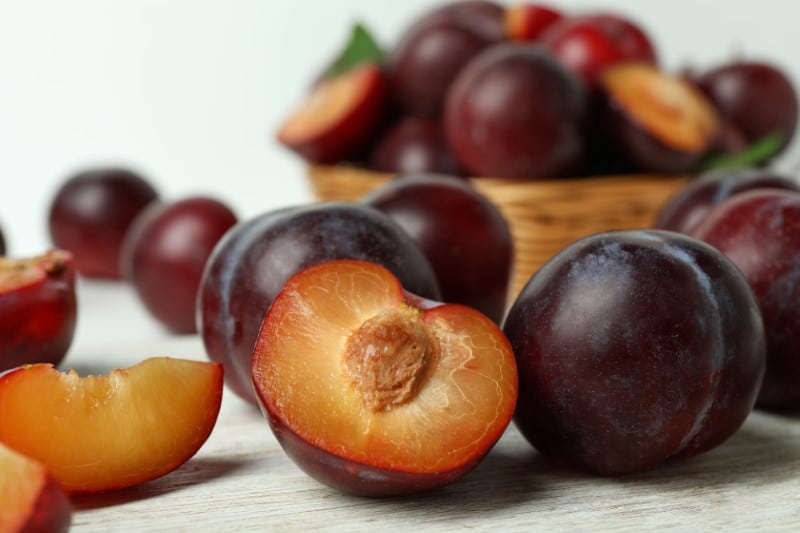
The plum fruit is scientifically referred to as prunus domestica. It is believed plums originated from Iran, where they were spread all around the world. Plum trees can grow to a height of 12 meters, and they tend to blossom in different months in different parts of the world. The plum fruits usually range between 2-7 centimeters wide and are mostly oval. The fruit’s skin is always smooth with a waxy surface, while the flesh is juicy and firm and surrounds the fruit stone. The fruit is usually sweet, but the skin leaves you with a tart aftertaste.
The plum fruit can be eaten raw, turned into jam, or used as a cooking ingredient. The plum fruit also has various uses, such as the juice extracted from the fruits can be fermented and turned into plum wine. The plum fruit can also be dried and used as snacks. There are various ways to prepare plums; you can either prepare them by poaching, grilling, or roasting.
Plums contain vitamin C that helps the body heal, regenerate and aid in forming blood vessels. Other health benefits of plum fruits include reducing your anxiety levels, lowering the risk of heart diseases, blood pressure, stroke, blood sugar and improving your bone health. Plums are also a good source of vitamins C, A and K, along with minerals like potassium, phosphorus and magnesium.
Pecan
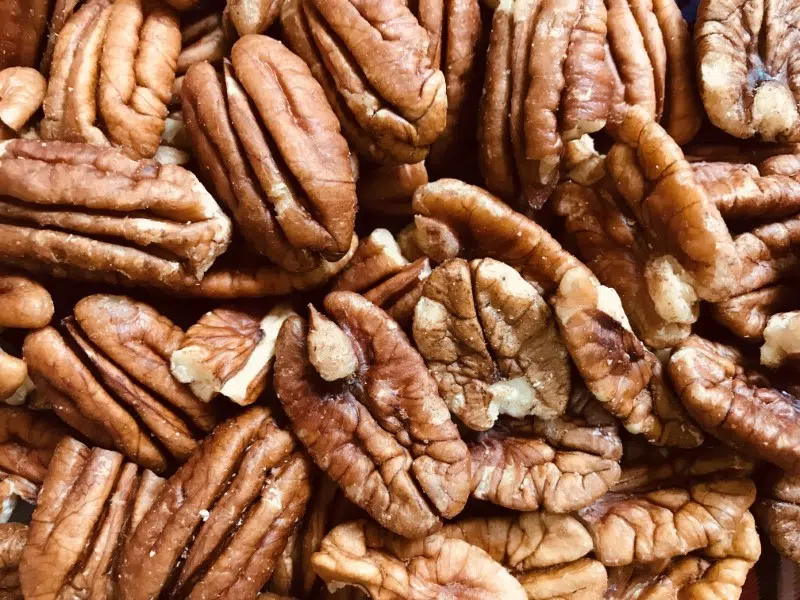
The pecan is scientifically known as Carya illinoinensis and is native to the southern united states and northern Mexico regions. The plant is mostly cultivated for its seeds. The pecan tree can grow to the height of about 20-40 meters. Like the other members of the hickory genus, the pecan is not a nut but a fruit with a single stone surrounded by a husk. The husk is usually green when unripe, but as the fruit matures, it turns from green to brown and splits into four sections.
The pecan seeds are edible raw or used in cooking. The pecan fruit possesses a rich butter flavor. Dishes that can be prepared using pecan fruit include pecan pie which is very common in the southern region of the United States. The nuts can also create pecan butter, a very common flavor in cookies, ice cream, and cakes. Other applications include the production of praline candy.
The health benefits of pecan fruit include boosting your brain functionality, helping in weight reduction, helping boost your body’s immunity, and reducing blood pressure. Pecan fruit also contains flavonoids that help minimize the risks of you getting cancer, diabetes and cognitive problems. The pecan tree can also be a source of timber and can be used to smoke meat, giving the meat a nutty flavor.
Persian Lime
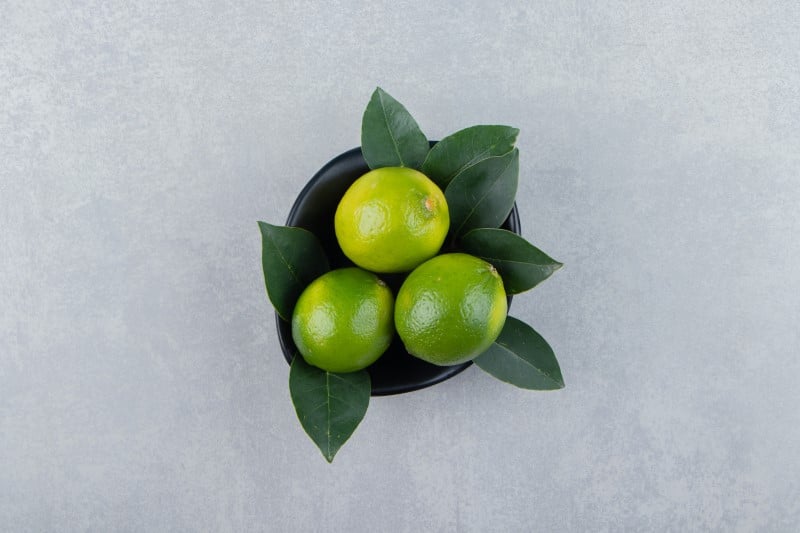
Persian limes are commonly known as seedless lime, Tahiti lime or Bearss lime, and it’s a hybrid between key lime and citrus lime. Scientifically the Persian lime is known as Citrus latifolia. The trees are almost thornless, and the fruit is about 6 centimeters in diameter. These types of limes are largely cultivated in the Persian region and southern Iraq. The fruits are always green but turn yellow once they reach full ripeness.
Persian limes happen to be less acidic than the other kind of limes, and they also lack the bitterness. The Persian limes are largely preferred for their aroma and juice. In some regions, lime is used as a flavor booster. Also, it can be used as a cleaning agent due to its acidic nature.
Persian limes also happen to be a source of vitamins B6 and C, minerals like potassium, iron, thiamin and calcium. The health benefits of this fruit include boosting your body’s immunity, promoting healthy skin, helping prevent kidney stones, and helping increase the body’s iron absorption rate. Persian limes are available in all groceries or markets all around the United States.
Pomelo
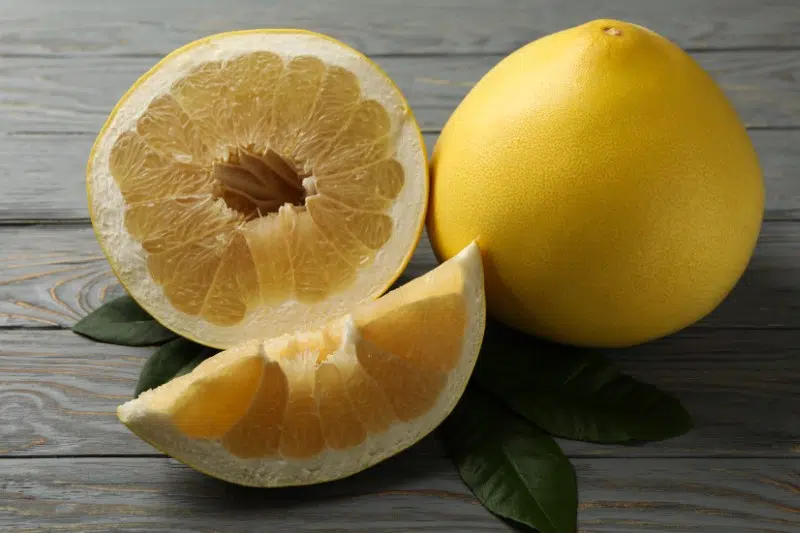
The pomelo is the largest member of the Rutaceae family and is scientifically referred to as citrus maxima or Citrus grandis. The pomelo fruit is native to the southeast region of Asia, and the pomelo tree can rise to a height of about 15 meters. The fruit is usually about 25 centimeters in diameter and weighs almost 2 kilograms. The skin of the pomelo fruit is a bit thicker than that of a grapefruit, and the inner edible flesh is divided into 11-18 segments.
The pomelo fruit tastes like a mild grapefruit, while the enveloping membranes happen to be bitter and chewy. The juice pressed from the pomelo fruit happens to be delicious and can be used to make refreshing beverages, while the rind is used to make preserves. In Brazil, the rind is used to make sweet conserve, while in Sri Lanka, it is sprinkled with sugar and then eaten as a dessert.
The pomelo fruit contains nutrients such as vitamins C and minerals like thiamine, riboflavin, potassium and fiber. These nutritional aspects of the pomelo fruit help the body promote weight loss and help reduce cholesterol levels. The pomelo fruit is rich in antioxidants that help prevent and reverse cellular damage, thus boosting your heart health, and the antioxidants present have anti-aging properties. The pomelo fruit can be found in all states in the US.
Pumpkin
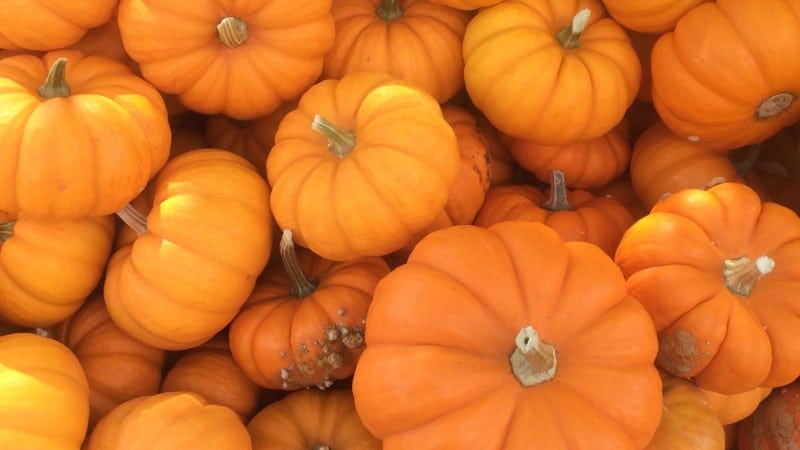
The scientific name for pumpkin is Cucurbita. The pumpkin is native to South America and Mexico.
Pumpkin varies in size and has ribbed skin that is orange or yellow. These big berries are spherical with a thick rind. Beneath the skin is a pulp that is fleshy and seedy. These veggies have a sweet earthly flavor. Depending on the variety, some are bitter.
Pumpkin can be mixed with lentils and goat cheese to make warm salads. You can also reduce pumpkin to paste, add it to soup, and serve with bacon. The pumpkin can also be boiled in hot water with its skin on until it becomes tender. It serves as a breakfast meal with tea.
Pumpkin contains zeaxannthin and lutein antioxidants that help protect your eyes by preventing the muscular degeneration of the eye as a result of aging. Pumpkin seeds are a good source of zinc mineral, which has the properties to boost fertility in men by maintaining healthy sperms. Pumpkins are also rich in fiber and low in calories, a good recipe to help you maintain or reduce weight.
Final letter
There are still a number of fruits that begin with the letter P that haven’t been included in the list above, such as plantains, pequi, peumo, pulasan, pulot and pomato fruit. You should take this as a challenge and try to figure out other fruits that begin with P.



